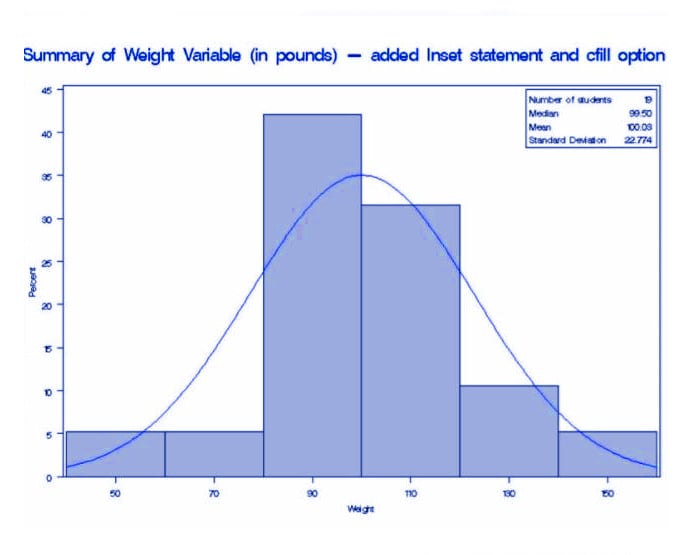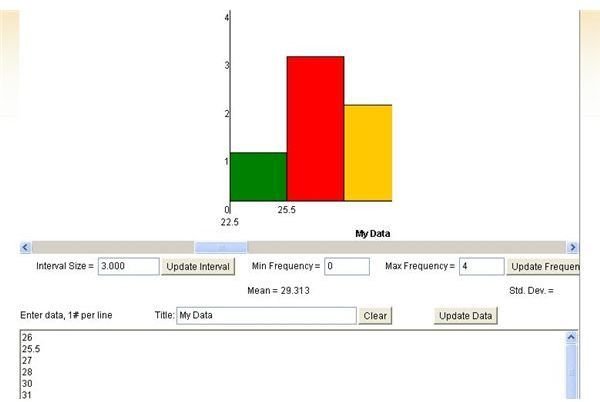
A computer would probably keep the 8.8 so be aware that sometimes you will see this number as a decimal. We will round this up to 9 just because it is easier to work with that way. The number we just found is commonly called the class width. Let’s say that we choose to have 6 groups. But if you are working with the dataset yourself, you will have to see what the graph looks like before you can be sure you chose a good number.

MORE OFTEN, people will let the computer decide and then adjust if they want to while textbooks will tell you how many groups to use. Often, a good number of groups is 5 or 6 although there are some rules that people use to decide this. Too few, and the pattern will be hidden with too little detail. Hmmm… but how many groups to have? Too many, and our graphs and tables won’t be much better than a list of numbers. In step 1, we measured how long the board is and now we are deciding how big each piece will be. It’s as if we are going to cut a board into equal pieces. Step 2: Divide the range by the number of groups you want and then round upĭoing this allows us to figure out how large each group is. We need this to figure out how much “space” we need to divide into groups. The range is the difference between the largest value and the smallest value. Steps to Making Your Frequency Distribution Step 1: Calculate the range of the data set This way if I have a HUGE data set (like many are) I can see the patterns (like are most people older or younger) much easier than if I just tried to decipher a large list of numbers. In the second question, I am grouping up the ages. It is sort of like the difference between asking you your age and asking you if you are between 20 and 25.


The idea behind a frequency distribution is to break the data into groups (called classes or bins) so that we can better see patterns. To make a histogram by hand, we must first find the frequency distribution. I went ahead and put the numbers in order which will make everything much easier.
#Simple histogram maker how to
To show you how to do this, we will be using the data set below.


 0 kommentar(er)
0 kommentar(er)
